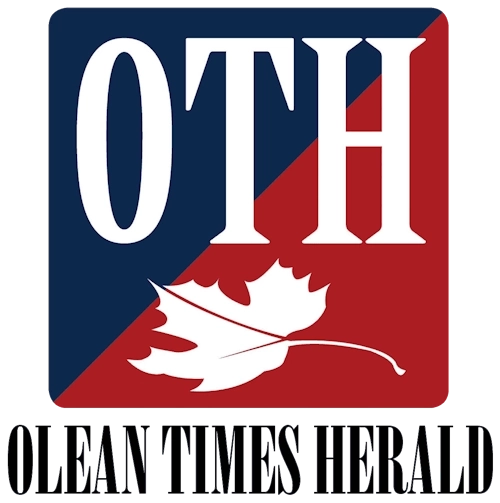Beware of the final days of any legislative session in Albany — and be ready for last-minute surprises. That’s especially important to keep in mind this year.
It’s critical for all New Yorkers to keep an eye out. There are legislative proposals under discussion that deserve high-alert status.
Legislation known as the NY HEAT Act, for example, would effectively ban the use of natural gas as an energy source for homes and businesses. It would have disastrous consequences, including driving up already high utility costs for most ratepayers; forcing homeowners to spend thousands of dollars to retrofit their homes to eliminate natural gas; removing consumer choice on how to heat their homes; and escalating costs for building homes and homeownership.
A recent analysis from the Empire Center pinpoints the ramifications: “New York has some of the most ambitious climate goals in the country: electric school buses by 2035, zero emissions electricity by 2040, etc. Why New Yorkers, who already consume less energy per capita than any state (other than Rhode Island), should lead the charge in saving the planet is the question for the politicians who voted on these policies in 2019.”
The HEAT Act, according to Empire Center, “consists of two basic ideas: first, New York will make you heat your home with electricity, and second, you might end up paying your neighbor’s electric bill.”
It’s a disaster in the making for most middle-class ratepayers. New York is already one of the least affordable and highest taxed states in America. We lead the nation in population loss. The Heat Act would make it worse. Albany Democrats continue to impose unaffordable and unrealistic energy mandates with no concern for affordability, feasibility, or reliability. They keep reaching deeper and deeper into the pockets of middle-class taxpayers, destroying family budgets, killing local jobs, and weakening local economies with the promise of very minimal or realistic benefits for most New Yorkers.
From the start, our Senate and Assembly Republican conferences, business leaders and other advocates have repeatedly called for a cost-benefit analysis of New York’s ongoing imposition of these far-reaching energy mandates, like the HEAT Act, since the approval in 2019 of the Community Leadership and Climate Protection Act (CLCPA).
We have consistently demanded answers about what the CLCPA agenda will cost ratepayers and local economies, expressed concerns about the broad mandates being enacted, and questioned whether the goals are realistic or achievable.
New York state only contributes less than a half a percent of global emissions. China and India are each adding more coal burning emissions each year in an amount greater than New York’s total. Even if New York could get to zero, we will have no impact on global climate change and, therefore, no benefit for the hundreds of billions, if not trillions of anticipated costs trying.
The HEAT Act alone would raise rates for at least 75% of New Yorkers, eliminate thousands of good-paying local jobs, and slap up to $50,000 in costs on homeowners who may be forced to transition from natural gas to electric heat.
New Yorkers already struggle to pay high utility bills. Even before CLCPA was approved in 2019, 25% of the delivery charges on utility bills were made up of New York state taxes and fees. NYSEG/RG&E recently declared that now over 50% is related to state mandated costs. For months now, my office and the offices of many of my colleagues in the state Legislature have been inundated with ratepayer complaints of exorbitant bill increases. No acceptable explanations have been forthcoming by the utilities or the state Public Service Commission which regulates utilities.
Over the past six years, things have only gotten worse. According to an Empire Center analysis of the first CLCPA report published by the Department of Public Service last year, rates had already risen by as much as 9.8% while recent rate increases had not been fully phased in yet.
Yet on it goes. Last week, the Democrat-led state Senate passed the so-called Extended Producer Responsibility Act, known as EPR, which will drive up costs of all packaged goods, including food products, due to outrageous mandates and recycling requirements on companies that sell anything packaged. Not a single Republican voted for it.
And if all that is not enough for the Albany Democrats, reports revealed yet another proposal introduced by two New York City legislators that would effectively ban future dairy farms in New York from expanding beyond 700 cows.
One Upstate county agricultural coordinator reacted this way and he’s right on target, “They haven’t done their research. They’ve never been on dairy farms. How dare they try to regulate something they know nothing about.”
It’s the latest in a longstanding tradition of ill-informed, misguided, outrageous and ridiculous proposals coming out of a state government now dominated by one-party, New York City-based leaders and interests. It continues to show a complete lack of understanding and calls for government overreach that would have a devastating impact on our rural, upstate local economies where the dairy industry has long been and must remain a mainstay.
While the Albany Democrats constantly talk about affordability, or the lack thereof, of living in New York state, they consistently take actions that drive up the costs of living here.
(State Sen. Tom O’Mara, R-Big Flats, represents the 58th Senate District of the Southern Tier, which includes the eastern portion of Allegany County.)







